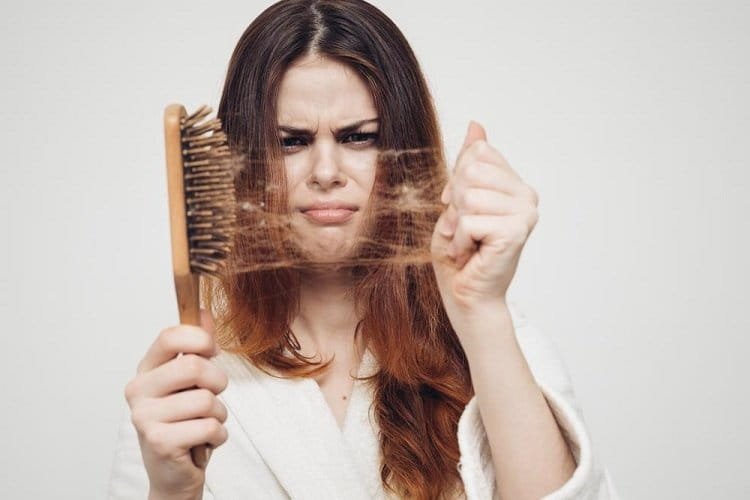Have you ever seen strange red spots sprung up on your skin along with pain? It’s doesn’t really look like hives, rash or pimples. Well, it might be an ingrown hair cyst.
Observe more carefully, can you can see hairs curving and growing downwards into your skin instead of rising up from it? Ingrown hairs are not serious but they can be embarrassing and irritating.
You must be wondering how to get rid of them? Let’s go over their causes and symptoms and then we’ll check some ingrown hair cyst home remedies.
What Causes Ingrown Hair Cysts?

Anybody can encounter this situation and it can have a substantial impact on your appearance. An ingrown hair appears when hair bends cannot go upward and outside of your skin. They roll in or grow against your skin and can lead to painful inflammation and minuscule bumps in the area where the hair was removed. This can be the result of the following:
1. Shave, wax:
Ingrown hair cyst is a usual condition and often caused by shaving and waxing if you do it in the wrong way. With men they usually appear in areas of the beard, including the chin, the neck, and cheeks or the scalp if they shave their hair. In women, the armpit, legs, and the pubic area are the most common areas that can be affected. The process itself can cause swelling, irritate your skin, cause pimples and result in cysts. Check this article for more on how to take care of your hair.
2. Acne:
Ingrown hair cysts may go along with cyst acne. A pimple appears and attaches to cyst acne due to common causes with acne: the pore was clogged by bacteria, or the skin could be infected. If the hair is ingrown, bacteria may go into the pore and easily to cause a cyst.
3. Pores are clogged:
Skin debris and dirt can block the pore, the outside of the follicle. An injured hair cyst can be formed and the hair cannot grow normally like it should. Therefore, the hair starts to curve and cannot go outside, leading to a cyst under the debris.
4. Gene:
If you have naturally curly hair, it can indicate that you also have a greater risk of developing ingrown hair cyst.
Signs and Symptoms
If you are afraid that you might be suffering from ingrown hair cysts but aren’t sure, let’s review the signs and symptoms:
1. Redness
It is very easy to see the red bumps in the areas around the cyst of the skin. They can affect your appearance and make you feel less confident, influencing your life in a negative way.
2. Skin irritation
This is a common symptom of ingrown hairs and is often manifested by feeling an itch. One of the causes for the itch can be released chemicals when the body tries to recover from the cyst.
3. Inflammation
This is a natural protection mechanism of our bodies, as it considers an ingrown hair cyst an “outside invader” and immediately opposes it. In this battle, the blood vessels dilate and the body continues to release enzymes to fight with the invader. This action results in blood accumulated under the skin and inflammation around the cyst.
4. Pain
Ingrown hair cyst can be inflamed or infected if you do not know how to take care of it in properly. It can make your skin feel painful and sensitive even without touching. This condition usually goes along with inflammation.
5. Pus
Pus is a significant sign of ingrown hair cyst that you should notice. The cyst can form small, pus-filled, blister-like lesions (pustules) that can release pus. Just one of the results of infected ingrown hair cysts.
If you have these signs and symptoms, it may be an indication that you got ingrown hair cysts. Do not despair though, the condition is not as serious as you imagine.
Now you should have a basic understanding about ingrown hair cysts. You must be wondering how to deal with this problem in a simple and safe way at home. You may find the answers below:
Ingrown Hair Cysts Home Remedies
1. Tea tree oil

Tea tree oil is well known in treating skin problems. It fights internal and external skin infections that otherwise have to be cures by powerful antibiotics. Tea tree oil is considered to be as powerful as benzoyl peroxide, a common ingredient in treating acne, redness, dry and peeling skin. It can assist your body in fighting against inflammation and infection in ingrown hair cysts.
You just have to drop a few drop of tea tree oil into a little warm water and clean and massage slightly the area that has ingrown hair cyst about 4 to 5 minutes. After that, rinse the skin carefully with clean water. Your condition should mostly ameliorating after a few weeks.
2. Black tea bags
Using black tea bags is a simple yet effective way to reduce skin irritation and treat ingrown hair cysts. Black tea is rich in vitamins (B2, C, and E), minerals (magnesium, potassium, and zinc), some essential oils, polyphenols and especially tannins. The tannins in black tea work as an astringent with antiseptic powers and help relieve inflammation and redness.
Start by humidifying a tea bag, rubbing it on the affected skin and leaving it for about 2 to 3 minutes. Repeat twice per day for a few weeks and wait to see the difference.
3. Baking Soda
Baking soda contains anti-inflammatory properties, which are essential for soothing the skin. Additionally, it also helps to reduce the redness and itching of ingrown hair cysts.
Mix a cup of water with 1 tablespoon of baking soda. Then, using a cotton ball, rub the ingrown hairs areas. Leave for about 5-7 minutes and rinse under cold water. You should repeat it about 2 to 3 times per day.
4. Aloe Vera
Aloe vera helps to fight against the redness, itching, pain, and possible infection of an ingrown hair because of its natural anti-inflammatory and antibacterial properties. You can use aloe vera by squeezing the gel of an aloe vera plant onto a cotton swab and then massage it into the ingrown hair cyst areas. Let it dry naturally. This process can be repeated 2 to 3 times a day.
5. Honey
Honey contains antibacterial properties without any side effects. You can increase your resistance to bacteria and boost up your energy by take a glass of lemon with honey. You can use honey on the ingrown hair cyst areas to deal with its symptom directly and you can digest it to keep yourself safe from infections that may appear because of ingrown hairs. You can use honey on the injured skin directly or compress warm honey.

Mix a tablespoon of honey with a few tablespoons of warm water. After that, immerse a clean cotton pad in this mixture for half a minute. Next, release redundant water and apply it to the injured cyst, leaving it for 7 to 10 minutes. Repeat the process twice per day and you will see your symptoms visibly improved.
Those are simple ways to deal with ingrown hair cysts with remedies that are accessible and can be performed at home and self applied. If your condition gets worse or you do not see a clear improvement after applying the remedies, you should go to and see a dermatologist for a suitable treatment process with specific medication for your situation.
On the other hand, prevention is most times better than a cure. Most people suffered from this problem due to shaving and waxing the wrong way. Therefore, limit waxing and shaving if possible in order to avoid injuring the skin further. However, if that is difficult to accept, here are some tips for you:
- Exfoliate your skin regularly to prevent clogged hair follicles due to dead skin cells. It also keeps the hairs out of growing down into your skin and leading to ingrown hairs. Exfoliate daily or once every two days, especially before waxing;
- Use warm water to wash the skin and a mild facial cleanser before shaving to soften your skin;
- Using lubricating shaving gel a few minutes before shaving;
- Use a sharp razor and avoid multi-blade razors which are much more likely to cause ingrown hair;
- Do not shave too closely and avoid pulling your skin when shaving;
- Figure out a suitable direction to shave, depending on each area of the skin;
- Rinse the razor between every stroke;
- Clean your skin carefully and apply lotion after you shave;
- Do not use the same razor more than its intended use.

Ingrown hair cysts can be a nightmare, but they won’t be so scary when you truly understand how to deal with them. Hope the above information was helpful!
REFERENCES:
1, https://carekees.com/ingrown-hair-cyst/
2, https://www.ncbi.nlm.nih.gov/pubmed/16418522
3, https://www.ncbi.nlm.nih.gov/pubmed/29442224

